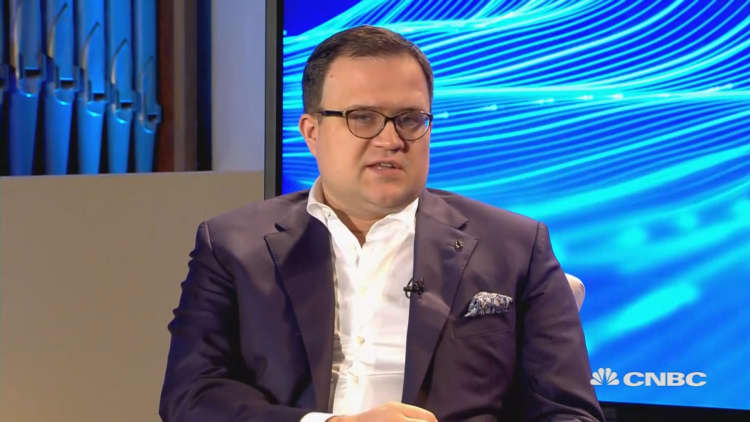For all the talk in Silicon Valley about the potential of blockchain technology, most of it is just that — talk.
Aside from cryptocurrencies like bitcoin and ethereum, there aren't many real-world applications of blockchain, a distributed ledger that allows data to be cryptographically tracked and secured.
One exception is a San Francisco-based money transfer business called Veem. Founded in 2014 by Marwan Forzley, who sold his previous start-up to Western Union, Veem is setting out to simplify cross-border wire transfers and payments to vendors and contractors.
Veem, formerly known as Align Commerce, uses three methods of sending money: Treasury, SWIFT and blockchain.
Treasury implies the movement of money between bank accounts that are in Veem's control. SWIFT (Society for Worldwide Interbank Financial Telecommunication) is the decades-old system that banks use for sending international payments, which can take days to settle.
Blockchain transactions occur over a digital ledger in a matter of seconds.
In the fourth quarter, Veem's blockchain-based volume more than doubled from a year earlier and accounted for 62 percent of its total transactions, Forzley told CNBC. Its blockchain usage has been moving steadily up as the technology gains trust and more global exchanges get comfortable with transacting in and out of cryptocurrencies.
"Like any new technology, none of this bakes overnight," Forzley said. "Compared to 2014, the environment is maturing and becoming a lot more business-like."

Companies typically use Veem to replace processes that required them to make a trip to the bank and fill out detailed forms. When a customer uses Veem's site to make a payment, Veem's software decides which transfer method to use -- the customer never knows if it's going via blockchain or another method.
Where blockchain is gaining adoption
Blockchain has some obvious advantages over SWIFT. Transactions are much faster and more trackable and settlements happen outside of banking hours.
But Forzley said the liquidity constraints of bitcoin are the biggest blocker. In order for Veem to move money on blockchain from the U.S. to Mexico, for example, the company transfers dollars to bitcoin locally and then from bitcoin to pesos on the other side. For blockchain to be the preferred route, there has to be enough demand on the receiving end so that it's not too expensive to complete the transfer.
"If we're doing it in the middle of the night and there's not enough demand for that particular transaction, then the bid-ask spread goes too wide and the economics are not as attractive," Forzley said.
International markets with the best liquidity include Europe, Japan, The Philippines and Mexico, with Brazil and India improving, he said.
Veem, which raised $24 million last year from investors including National Australia Bank Ventures and GV (formerly Google Ventures), serves businesses ranging from surfboard maker Global Surf Industries and software company Checkster to Bulat Kitchen, which makes knives.
While blockchain now accounts for the bulk of Veem's transactions, it only handled 10 percent of the total amount of money sent in the fourth quarter. When it comes to transferring large sums, it's still more efficient for Veem to use traditional financial rails.



